BACK TO SCHOOL: Design for In-Person Learning During a Pandemic
September 19, 2021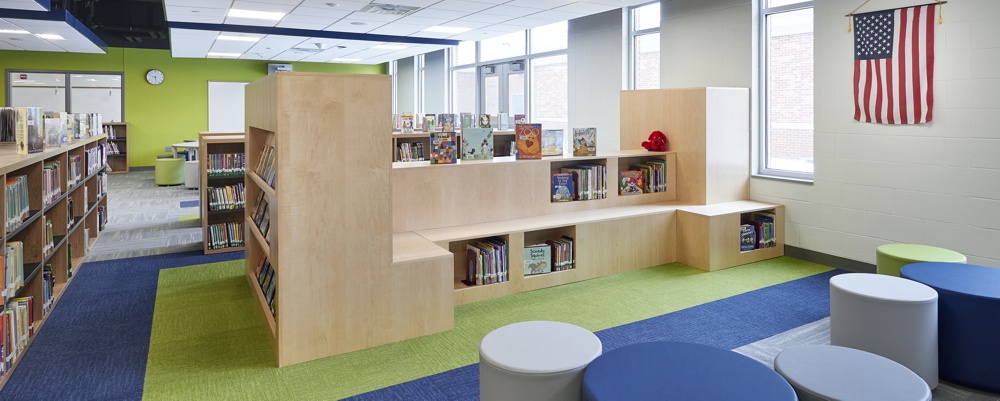 This fall, millions of K-12 and college students headed back to school amid the ongoing COVID-19 crisis. Determining best practices for navigating this return has been challenging for administrators, teachers, students, and families alike. Design for in-person learning during a pandemic requires both flexibility and creativity. To that end, a number of manufacturers have developed innovative furniture and other classroom products to help K-12 school, colleges and universities quickly adapt to changing conditions and social distancing needs.
This fall, millions of K-12 and college students headed back to school amid the ongoing COVID-19 crisis. Determining best practices for navigating this return has been challenging for administrators, teachers, students, and families alike. Design for in-person learning during a pandemic requires both flexibility and creativity. To that end, a number of manufacturers have developed innovative furniture and other classroom products to help K-12 school, colleges and universities quickly adapt to changing conditions and social distancing needs.
Our team does not endorse any one product or manufacturer. The following is an overview of some of the products we have found while helping our clients review available options. Many of these offer benefits not only for today’s continually evolving safety priorities, but also for adaptable learning spaces beyond the current pandemic realities.
Room Dividers for In-Person Learning
Public school districts and private schools have each approached the face-to-face return differently. For most social distancing has been a priority.
Various types of flexible room dividers, with movable furniture for smaller personalized settings, can be a valuable tool to help keep schools operating safely while allowing for group collaboration and activity zones in the future.
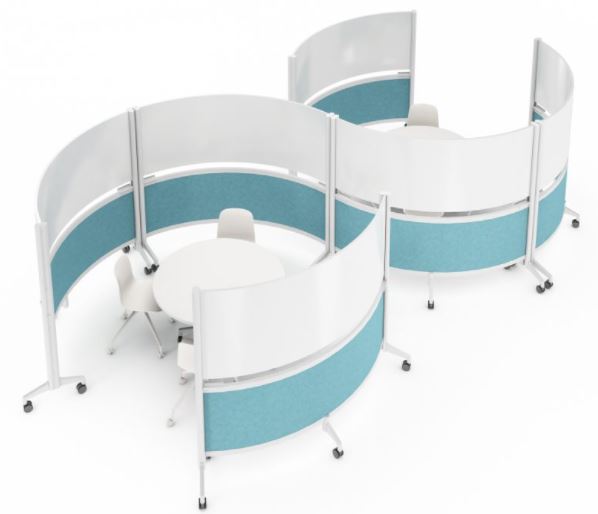
Movable whiteboards can be another flexible design tool that works well as a room divider now and to support different learning pedagogies in the future.

This multi-functional product takes a different approach through modular wall panels that can be converted to room dividers, The panels can be tack surfaces or marker boards.
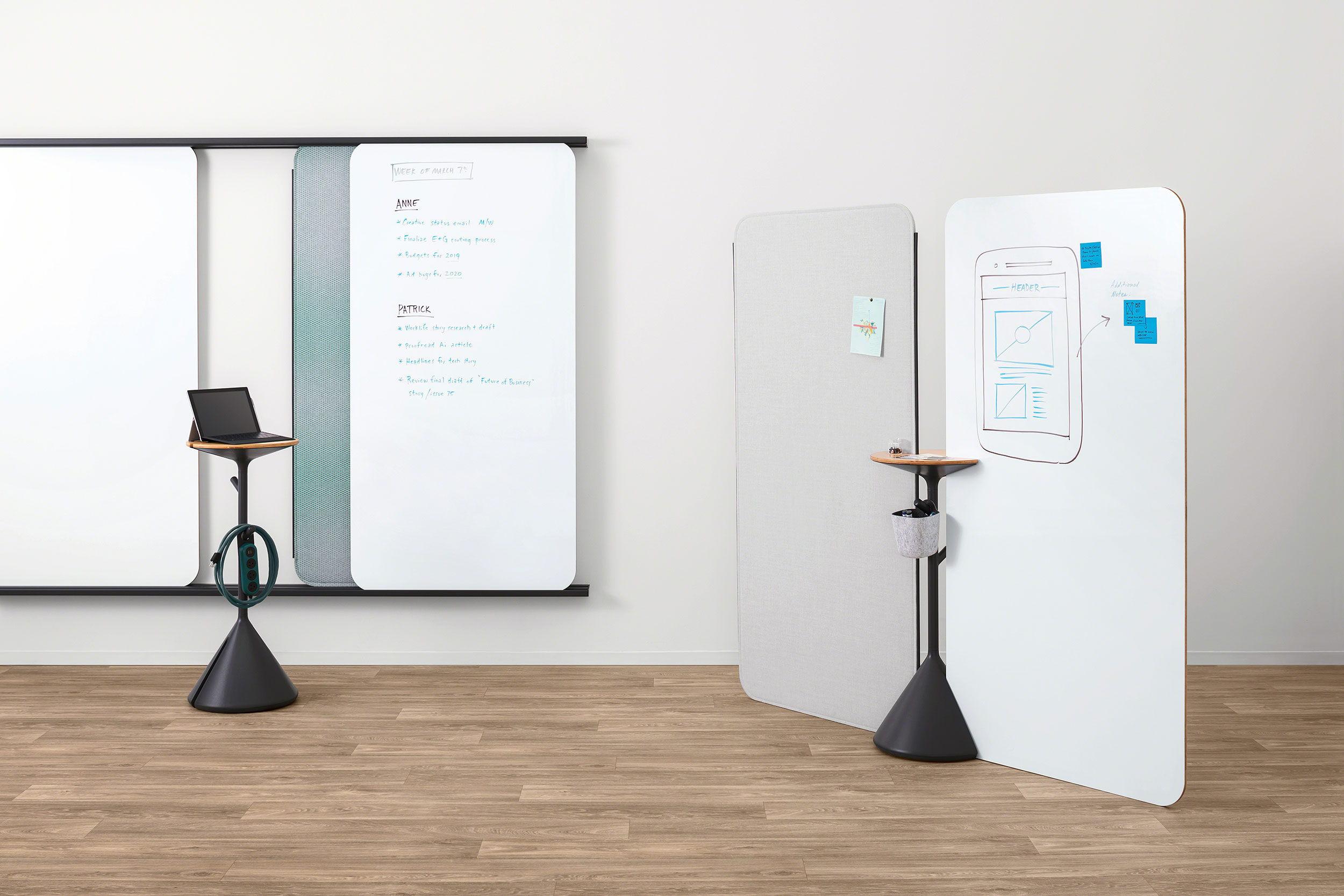
The Rover Table from Haskell Education was designed to help schools introduce maker spaces into existing classrooms that are often tight on space. They also offer the capability to minimize intermingling of different classes by having instructors bring specialty learning activities to students who remain in their main classroom.
Individual or small group spaces, such as banquette seating, reading nooks or pods, are another recent trend supporting in-person learning priorities now and into the future. The social distancing options support the biophilic design principle of refuge. Spaces of refuge provide a sense of enclosure, safety and comfort. For example, a corner where a student can curl up with a good book provides “prospect” views into other areas of potential interest.

Desk Dividers for In-Person Learning During a Pandemic
This whimsical desk divider combines protection with fun designs for younger students. This product could be used on an individual basis this year to reduce transmission of germs. Moving forward, these could be used as dividers for test taking or small group activities.
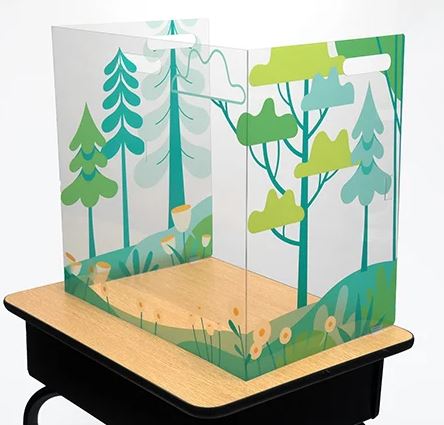
Flexible furniture trends have been beneficial for adapting to variable protocols in response to the COVID-19 pandemic. The personal marker board provides a functional divider for sharing ideas while maintaining distance as well as future screening for individual work or for small group activities.

Touchless Features for School Design
Touchless technology helps to safeguard against the spread of COVID-19 and other pathogens on surfaces. There are an increasing variety of hands-free and touchless technology solutions that schools can implement today to help reduce the areas that multiple people touch during the day. These include door openers, faucets, soap dispensers, paper towel dispensers or hand dryers and water fountains or bottle fillers.
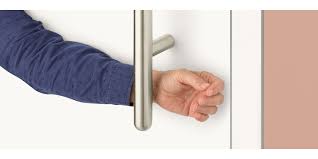


It’s important to note that antimicrobial coatings might seem like a good idea, but experts say there is no evidence that these products actually help, and a chance that they may worsen health.
Design Materials for In-Person Learning During a Pandemic
Solid surface materials, like Corian or Wilsonart, provide seamless countertop options that meet the performance standards of an educational environment. Likewise, Terrazzo flooring is a seamless, low maintenance flooring option that does not support microbial growth, absorb moisture, or grow mold. It also does not emit chemical contaminants.
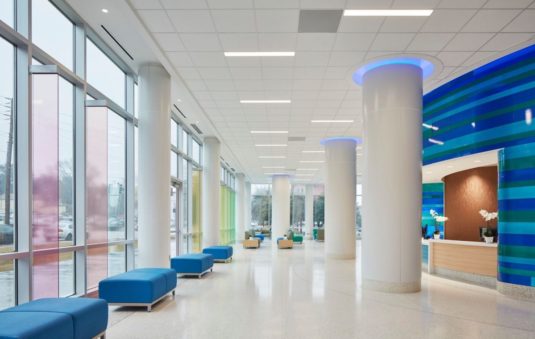
Taking the Classroom Outside
Enjoy fresh air with the ability to spread out as needed. Green Schoolyards America offers practical resources for taking school outside during the pandemic and beyond. According to the organization, repurposing outdoor spaces is a cost-effective way to reduce the burden on indoor classrooms while providing fresh air, hands-on learning opportunities, and the health benefits associated with increased access to nature. A number of case study examples on the site illustrate that this concept can occur in various climates throughout the United States.

Thank You Educators!
While this year’s back-to-school transition has been full of ambiguities, the commitment of K-12 schools and higher education institutions has been unwavering. THANK YOU to our clients and all educators for your patience and dedication during these challenging times!
Jacqueline Fox, IIDA, is continually researching design trends and innovations to serve our educational clients. She is excited to share new products developed in light of current and long-term design priorities for in-person learning.
Blog Editor – Jodi Kreider, LEED-AP